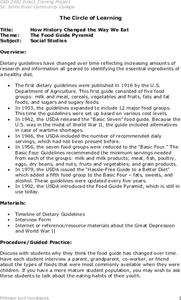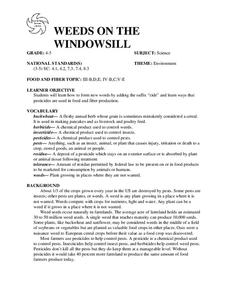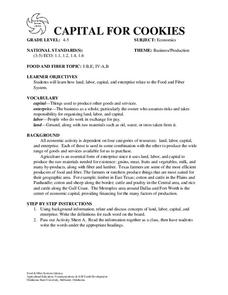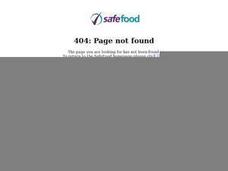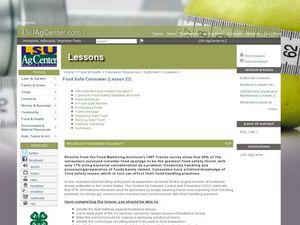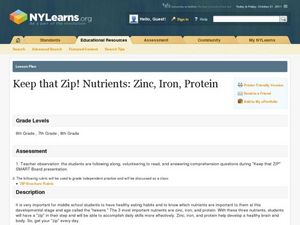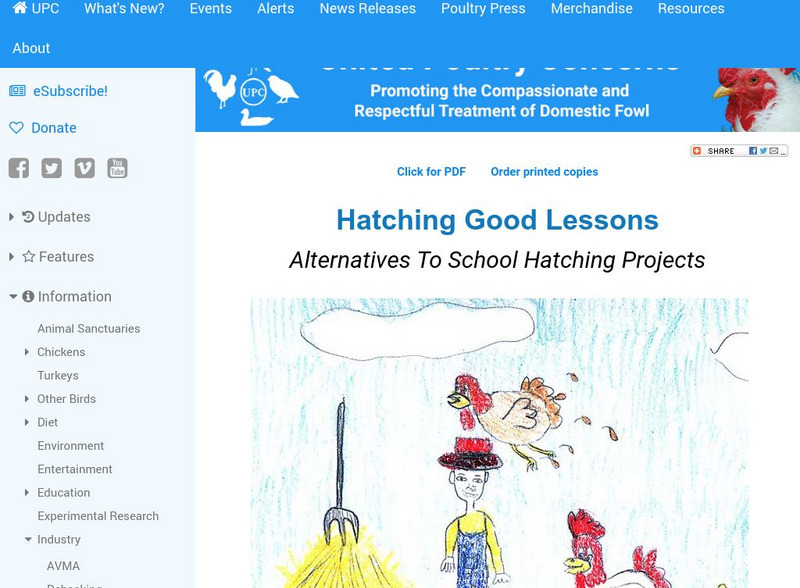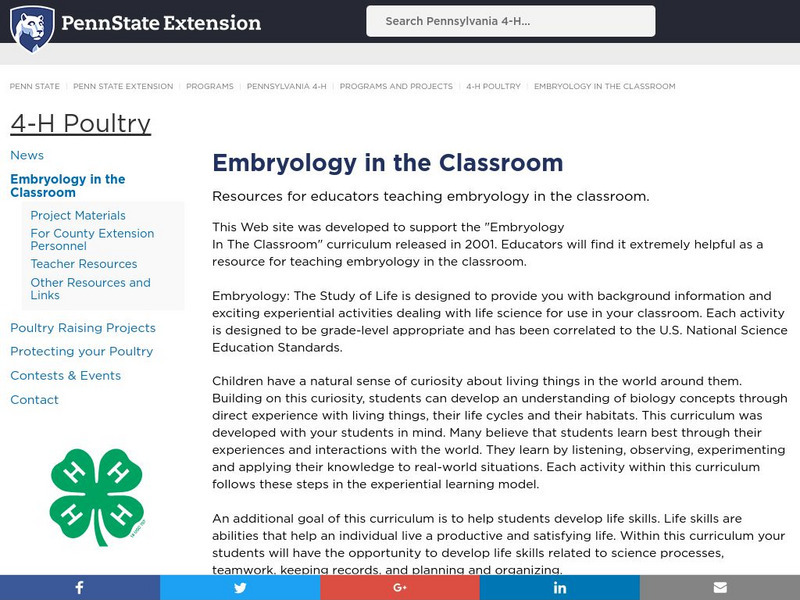Curated OER
Kitchen Calculations
Students compare eggs to other foods as a cost-effective protein source. They use formulas to determine prices in a worksheet and in local newspaper ads.
Curated OER
Kansas vs the U.S.
Young scholars demonstrate an understanding of the physical and political geography of Kansas. They view maps and films to gain knowledge of Kansas. They calculate the percentage Kansas harvests for each crop out of the national total.
Curated OER
How History Changed the Way We Eat
Students participate in a lesson that is concerned with the history of the food pyramid and how it evolved and changed into its modern state. After being presented with the information they conduct classroom discussions about the research.
Curated OER
Hot Off the Grill
Students read an article about humans getting sick from eating improperly cooked meat. In groups, they cook a hamburger patty and when they believe it is done, they check the temperature with thermometers. They record their temperatures...
Curated OER
Farm Animals
First graders conduct research about farm animals and what it is like to live on a farm. They explore a variety of websites and complete an online WebQuest. They select a farm animal, and write a report about their animal's...
Curated OER
PICKING PEANUTS
Students create sentences, using words printed on pictures of peanuts. They are explained that the peanut is not really a nut, but a legume, related to beans and peas. Students are also told that the first peanuts grew in Brazil. They...
Curated OER
WEEDS ON THE WINDOWSILL
Discuss the suffix "cide." Have young scholars name words having this suffix (homicide, suicide, genocide). Ask students what all these words have in common. Then ask young scholars to define the word "pesticide." (Pesticides control...
Curated OER
Capital for Cookies
Students explore how land, labor, capital, and enterprise relate to the Food and Fiber System. They write a story about a company they would open in the community, create a company to make an agricultural product and discuss the various...
Curated OER
Hands of Doom
Students discuss the four essential step used for safe food handling: clean, separate, cook, and chill. They identify the bacteria that can cause food poisoning, practice how to properly wash hands before and after handling food,...
Curated OER
Sanitarium Times
Students learn about the Sanitarium Times as they look into how they lived, what they ate, how they were entertained, etc... In this Sanitarium Times lesson, the students do research and create papers as well as look for living members...
Curated OER
Science in Your Shopping Cart
Students research the use of science in food production in the United States. In this science and food lesson, students visit a specific website to learn about the science used in various food products for United States consumption.
Curated OER
Cows, Worms, and Compost
Students study decomposition. In this decomposition instructional activity, students discuss the background information about decomposition. Students then complete the 'Chew It Twice' worksheet.
Curated OER
Nutrition: Why do we need rice in our diet?
Second graders discover what the Food Guide Pyramid represents. In this health lesson, 2nd graders experience the types of foods represented in each of the groups found in the pyramid. As part of this lesson, students discover one food...
Curated OER
Food Safe Consumer
Young scholars explain how to prepare and keep food safely. In this health science instructional activity, students research common mistakes and tips for maintaining a clean kitchen. They identify main causes of foodborne diseases.
Curated OER
Keep that Zip! Nutrients: Zinc, Iron, Protein
Learners explain the importance of zinc, iron and protein. In this biology lesson, students create a brochure containing information about the three nutrients. They share their brochure in class.
Other
United Poultry Concerns: Hatching Good Lessons
A collection of lessons on how to teach elementary students about chickens without actually hatching them in the classroom, which is not the best for the animals.
Pennsylvania State University
Penn State University: Embryology in the Classroom
Come and learn more about how to incorporate embryology into your classroom. This site features tons of information about the embryology of chickens.
Alabama Learning Exchange
Alex: From Egg to Chick
This lesson is intended to help students realize that they can learn much about eggs/chicks or any animal through careful observation. They will become familiar with the importance and proper care of eggs/chicks, whether on a farm or in...
Other popular searches
- Poultry Project
- Poultry Quality Grades
- Meat and Poultry
- Zoology Project on Poultry
- Poultry Production
- Poultry Farming
- Poultry Farms
- Poultry Lesson Plans
- Poultry Cooking
- Schecter Poultry
- Poultry Fish Forms
- Specter Poultry


